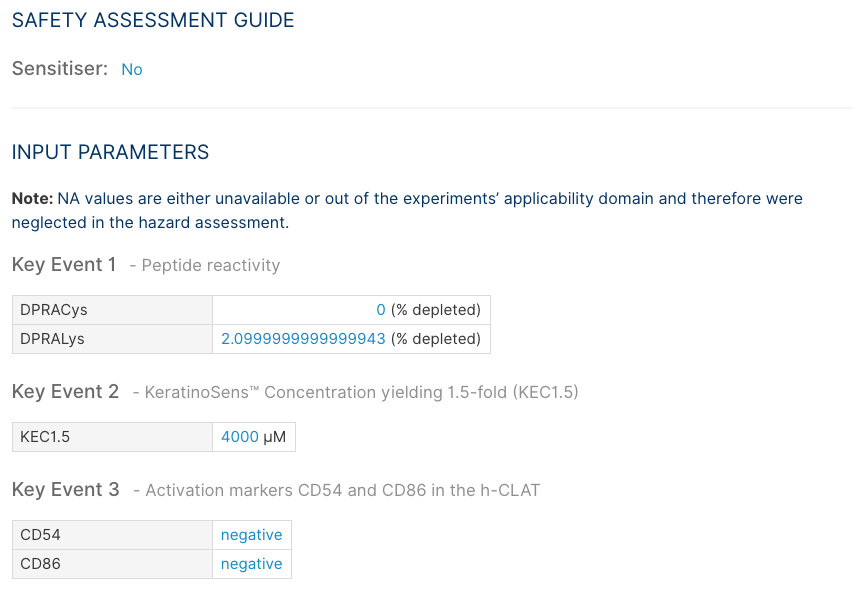SaferSkin™ report Tutorial
Overview
Each method has its individual report showing at minimum, a safety assessment guide (with explanations for the user to guide their decision making and includes the sensitisation potential of the compound in question), the input data, and calculated parameters. A summary report showing all 3 methods and comparison of the outcomes is also included.
Summary of results
A summary of the results for each method are presented as shown below. This includes the 2-class (sensitiser/not a sensitiser) classification for all methods, and the 4-class or potency classifications (not a sensitiser, weak sensitiser moderate sensitiser, or strong sensitiser) available for the Bayesian network and multiple regression approaches.
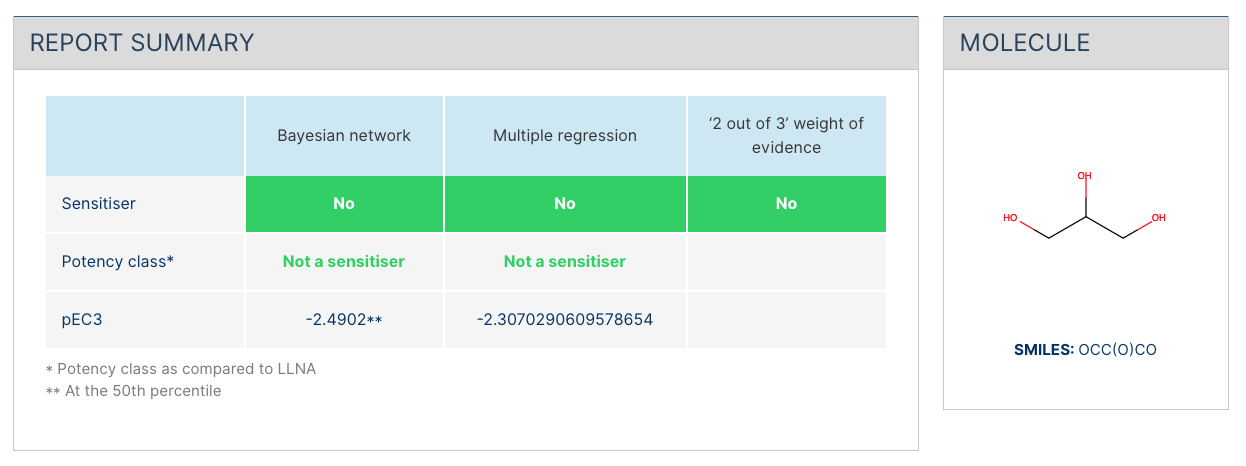
Bayesian network (BN) integrated testing strategy report
The report is presented in the following order:
- Safety Assessment Guide
- Input Parameters
- Calculated Values
Safety Assessment Guide:
The safety assessment guide reports both the EC3 and pEC3 at the 50th percentile as well as the sensitisation category and prediction confidence of the substance. The EC3 and pEC3 at other percentiles are also presented in a table as shown in Figure 2.
A potency probability distribution based on exploring the 50th - 90th percentiles of the pEC3 for the molecule is generated. The user will need to determine the appropriate level of risk acceptance for the molecule under evaluation.
The y-axis represents the posterior probabilities for each classification category (non, weak, moderate, strong).
The x-axis represent the constant pEC3 ranges for which each classification category falls (Non (< -1.9), Weak ( -1.9, -1.1), Moderate (-1.1, -0.35), Strong (> -0.35).
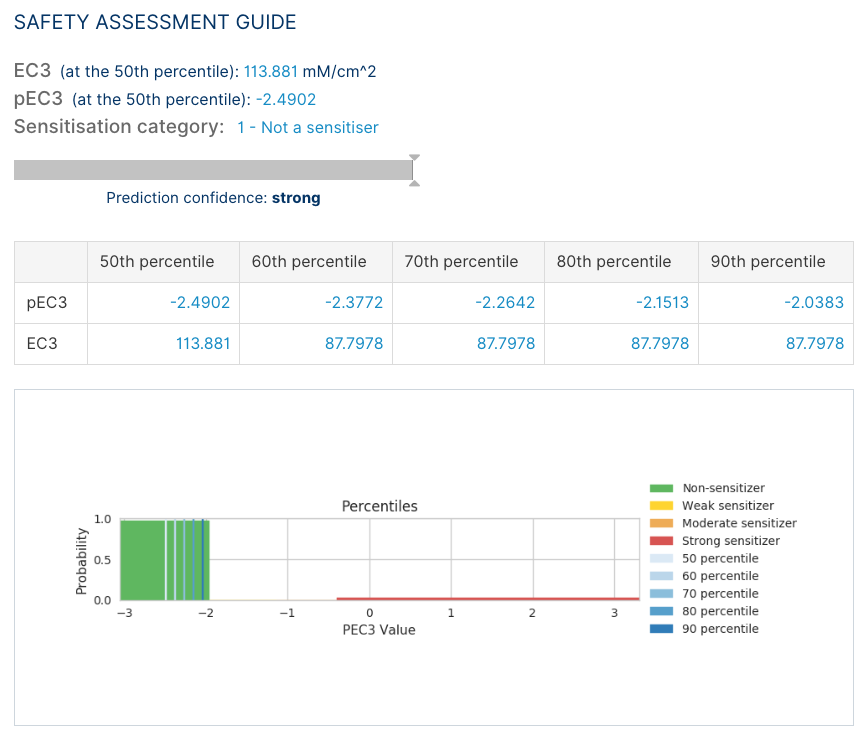
Input parameters:
The input parameters used in generating the prediction are also reported (Figure 3).
- In silico descriptors (provided by user or calculated by SaferSkin™ app: TIMES prediction (currently only provided by user), Water solubility @ pH7, LogKow, Octanol/Water partition coefficient, Protein binding, logD @ pH7, and Michael acceptor (indicated by user).
- Experimental values (provided by user) from assays: DPRACys, DPRALys, KEC1.5, KEC3, IC50, EC150, EC200 and CV75
Note: ‘NA’ designation in this section represents values that are either unavailable (not provided by user) or out of the applicability domain and therefore were not used in the hazard assessment.
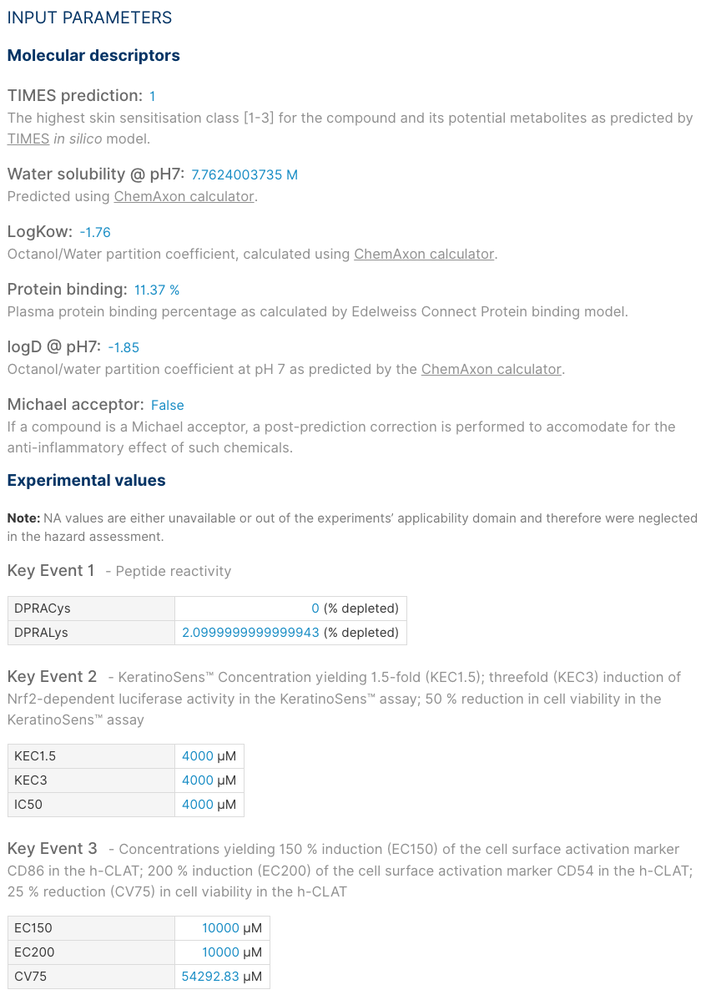
Calculated values:
The calculated values, and distribution plots generated are also provided (Figure 4).
- Prior Probabilities: The prior probabilities are always: Non= 0.2653, weak= 0.2653, moderate= 0.2721, Strong= 0.1973 (as calculated from Jaworska et al. 2015)
- Posterior probabilities: The calculated posterior probabilities are also presented and these may change with each molecule prediction.
- Michael acceptor correction: In the instance where a compound is designated as a Michael acceptor, the posterior probabilities are adjusted to account for the anti-inflammatory properties of the compound. A graphical representation of the probabilities is also generated with Michael acceptor correction, if designated, also shown (see Figure 5 for a specific example of this).
- The Bayes factor: is an indication of the strength of evidence for accepting the prediction. It quantifies the uncertainty to aid in decision-making. In the example below, the non-sensitiser category has the largest Bayes factor (102.6337) and as such the compound is classified as a non-sensitiser. The larger the Bayes factor, the stronger the evidence to support a prediction. <1 = Negative (evidence supports an alternative); 1–3 = Weak; 3–30 = Substantial; >30 = Strong. In this example the confidence is substantial. The other classes register below the ‘Weak’ threshold.
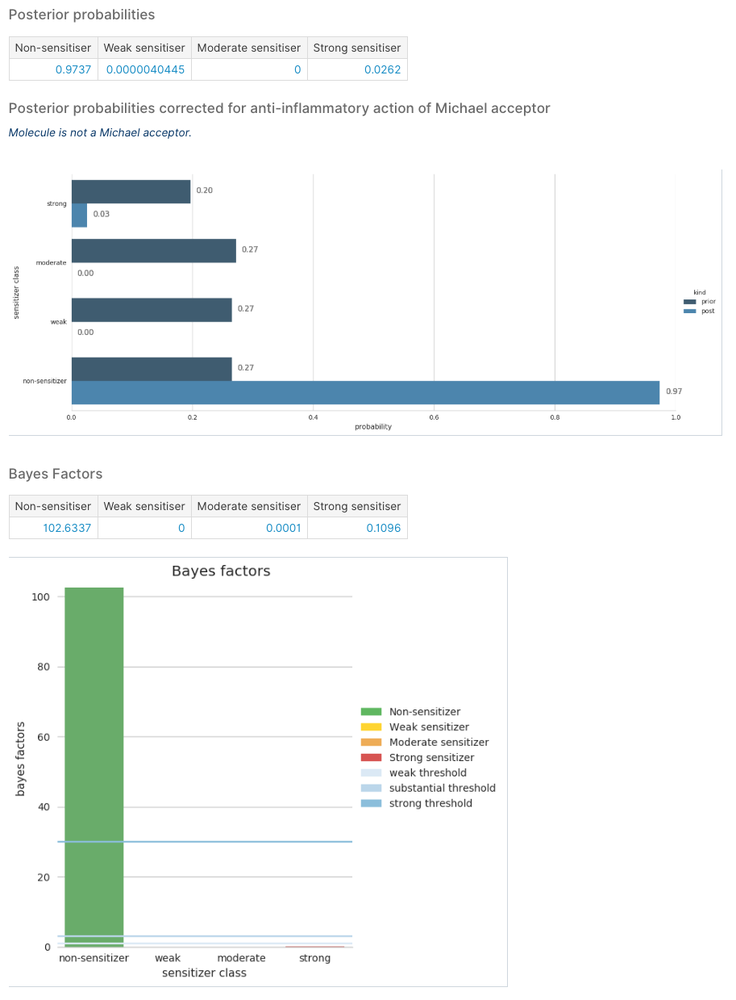
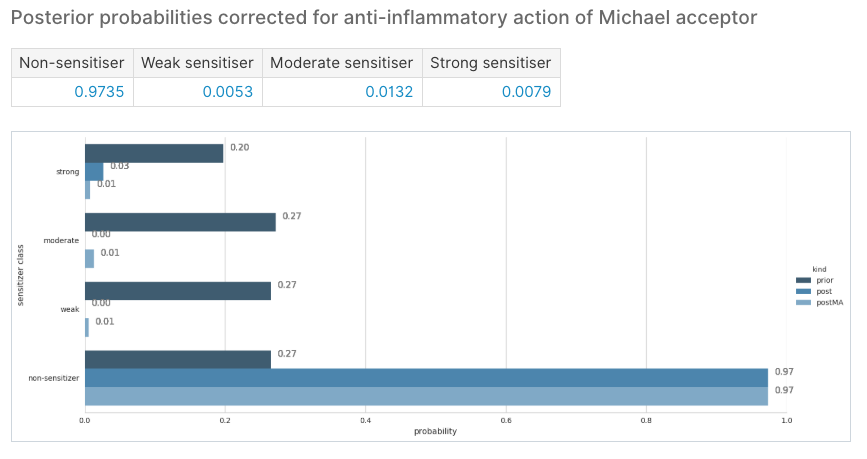
Multiple Regression
For this method the following information will be provided in the report to assist in decision making as shown below:
- Safety Assessment Guide
- Input Parameters
Safety Assessment Guide:
The pEC3 result and the sensitisation category are reported. The sensitisation category (1 = Not a sensitiser, 2 = weak sensitiser, 3 = moderate sensitiser, or 4 = strong sensitiser) is derived from the pEC3 and is comparable to the categories used in the Bayesian Network method.
Input parameters:
Experimental values Kmax, KEC1.5 and IC50 (provided by the user) from the in vitro assays (Cor1-C420 Assay and KeratinoSens™) are reported.
Note: For this method to be applicable, the user will need to provide all the required information. In the event the user provides incomplete information, no prediction is made for this method. The safety assessment will be blank showing “NA” instead of a pEC3 or sensitisation category, while only the input parameters entered will be reported.
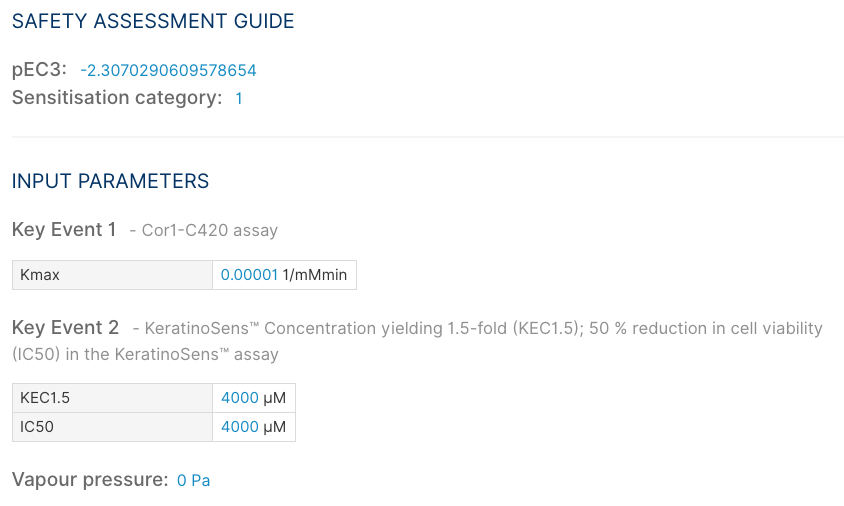
‘2 out of 3’ weight of evidence integrated testing strategy
For this method the following information will be provided in the report to assist in decision making as shown below:
- Safety Assessment Guide
- Input Parameters
Safety Assessment Guide:
The output here is a 2-class classification of ‘Sensitiser’ or ‘Not a Sensitiser’.
Input parameters:
Experimental values (provided by the user) from assays used to make the decision are also reported. The values reported are: DPRACys, DPRALys, KEC1.5, CD54 and CD86.
“NA“ designation in this section represents values that are either unavailable (not provided by user) and therefore were not used in the hazard assessment.
Note: For this method to be applicable and informative, the user will need to provide the information on at least 2 out of 3 assays. In the event the user provides information on 2 assays and they disagree (implying that the method is unable to make a prediction), then no prediction will be made for this method.
